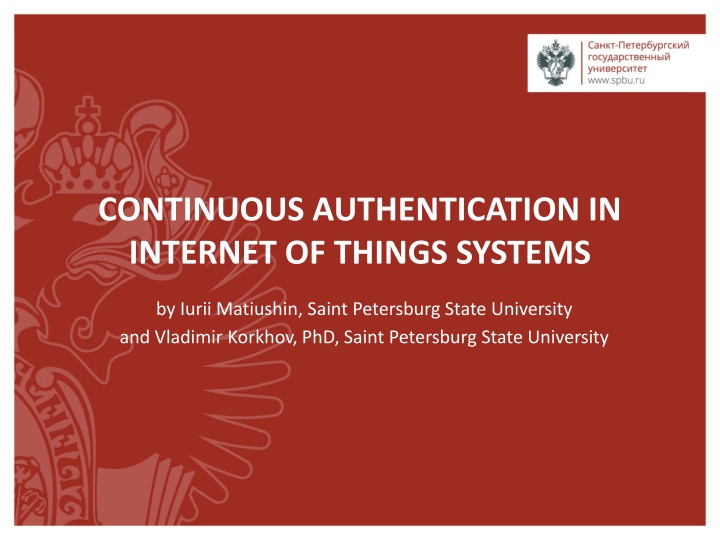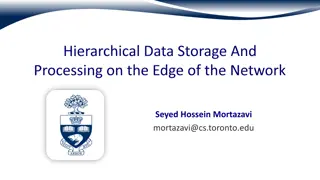Resource Performance Computing Environment on Third-party Application Platform Access System
This resource delves into the high-performance computing environment on a third-party application platform access system implemented at the High-Rong HE Computer Network Information Center, Chinese Academy of Sciences. It covers the China National High-Performance Computing Environment, SCE middleware for Science Cloud, SCEAPI-REST, and more, detailing the access system, implementation, and future work. Explore account creation, resource identification, API management, and authorization in this comprehensive overview.
Download Presentation

Please find below an Image/Link to download the presentation.
The content on the website is provided AS IS for your information and personal use only. It may not be sold, licensed, or shared on other websites without obtaining consent from the author.If you encounter any issues during the download, it is possible that the publisher has removed the file from their server.
You are allowed to download the files provided on this website for personal or commercial use, subject to the condition that they are used lawfully. All files are the property of their respective owners.
The content on the website is provided AS IS for your information and personal use only. It may not be sold, licensed, or shared on other websites without obtaining consent from the author.
E N D
Presentation Transcript
CONTINUOUS AUTHENTICATION IN INTERNET OF THINGS SYSTEMS by Iurii Matiushin, Saint Petersburg State University and Vladimir Korkhov, PhD, Saint Petersburg State University
Questions What are authentication and continuous authentication? What challenges does IoT offer in terms of authentication? What methods and approaches can fit the task of continuous authentication in IoT systems? What are the future research directions?
What is authentication? Authentication is a part of a larger system access pipeline. Arguably most important from the security standpoint. Authentication methods are numerous, usually classified by factor. 1. 2. https://id4d.worldbank.org/guide/id-101-basic-concepts-0 https://www.ekransystem.com/en/blog/continuous- authentication
Continuous authentication Continuous authentication (CA) is a new approach to user authentication. CA main idea check the user s authenticity many times throughout the session. CA is a part of a broader security paradigm called Zero- Trust Security Architecture. Multiple CA algorithms exist, many are based on biometric methods (inherence factor). 1. 2. https://www.ekransystem.com/en/blog/continuous-authentication https://www.techtarget.com/searchsecurity/definition/continuous-authentication
Common CA methods Keystroke-based user recognition How the user presses the keys, enters certain combinations, etc. Face identification Continuous observation of the user s face via a camera Mouse movement recognition How the user moves the mouse, clicks the mouse buttons, etc. Touch gesture-based authentication How the user interacts with a touchscreen device, presses, swipes, performs multi-touch gestures, etc. User behaviour-based authentication The patterns of the user s interactions with the system, possibly combined with other methods
IoT challenges for CA Limited computational and storage resources Resource-intensive authentication methods might not be optimal Limited energy and bandwidth Important to choose lightweight authentication methods and take network limitations into account Lack of conventional user interface Most common continuous authentication methods require input devices
Existing approaches for IoT Continuous authentication methods that can be suitable for IoT environments include: Face recognition and blockchain-based method User gait-based method Shared secret-based hybrid method PUF (physical unclonable function)/device architecture-based hybrid method Context-based hybrid method The following slides provide a brief overview of each method.
Blockchain-based method Article: Continuous authentication architecture based on Blockchain for internet of things by F. Hussain Al-Naji and R. Zagrouba. Method: CAB-IoT a distributed and scalable blockchain-based CA method. Face recognition is used to detect intruders with the help of a trust module. A distributed ledger is used, based on Ethereum smart contract.
Gait-based method Article: Continuous Authentication and Authorization for the Internet of Things by M. Shahzad and M. P. Singh. Method: WifiU dynamic biometric authentication based on gait. Based on changes in CSI (channel state information) and RSS (received signal strength) as a user is walking. The system learns the user s walk patterns and uses them for authentication.
Shared secret method Article: A Lightweight Continuous Authentication Protocol for the Internet of Things by Y.-H. Chuang et al. Method: hybrid static and continuous device authentication protocol. First, the device and the gateway are initialized, sharing important information, including a shared secret. During the static authentication phase, the device authenticates via cryptography and sends its data to the gateway. During the continuous authentication phase, the gateway uses the message s timestamp and the device s battery charge.
PUF-based method Static Article: PUFDCA: A Zero-Trust-Based IoT Device Continuous Authentication Protocol by S. Alshomrani and S. Li. Method: PUFDCA two-stage hybrid device authentication method based on unique device properties and device location. The first stage uses PUF (physical unclonable function), which is based on a device s physical microstructure. The second stage uses CSI measurements to verify the device s location during a session. authentication Continuous authentication
Context-based method Article: Zero Trust Access Control with Context-Aware and Behavior-Based Continuous Authentication for Smart Homes by G. R. de Silva, D. F. Macedo, and A. L. dos Santos. Method: ZASH Zero-Aware Smart Home System. The method uses context clues (time, device, etc.) and prompts the user for a biometric proof (e. g. fingerprint) in case of suspicious behaviour.
Methods comparison Name Year Main principle Advantages Limitations CAB-IoT 2020 Based on face recognition and a distributed ledger Limited bandwidth and storage requirements, resources- intensive processes handled by fog nodes, high accuracy Limited robustness testing so far; face observation needed; fog nodes needed WifiU 2017 Does not need special hardware or lighting, easier to deploy and better coverage vs. video-based methods Distance limited to 6 m, recognition accuracy limited, single user only, walking needed Based on user s gait, or the manner of walking Chuang et al. 2018 Static authentication via a shared secret, continuous authentication via timestamp and battery charge Lightweight cryptography, taking limited computing resources and storage into account, Needs initialization phase, needs secure storage for secrets, frequent messaging PUFDCA 2022 Static authentication via PUF, continuous authentication via device location Lightweight, low energy consumption, resistance against multiple attack types Static authentication required before each connection, needs secure environment ZASH 2021 Context clues and biometric proof in case of suspicion Flexible, multiple access levels, protects against impersonation attacks Needs stable behaviour patterns
Prospective CA for IoT Based on existing methods suitable for IoT, we can identify several features that a prospective continuous authentication algorithm could have: Distributed added scalability Biometric most common and efficient approach Hybrid combines static and continuous authentication for flexibility and security Context-aware for further security User type-aware useful in both home and corporate IoT
Conclusions Continuous authentication (CA) is a newer and more secure way of user authentication. IoT presents unique challenges for CA, including limited computational resources and lack of keyboard/mouse input. Several CA methods suitable for IoT have been considered. Each method has its own advantages and limitations; some are concerned with authenticating devices, while others are concerned with authenticating human users. Future research directions: Biometric technologies most applicable to IoT-suitable CA Distributed technologies most applicable to IoT-suitable CA New algorithms based on the existing algorithms best features
- spbu.ru























